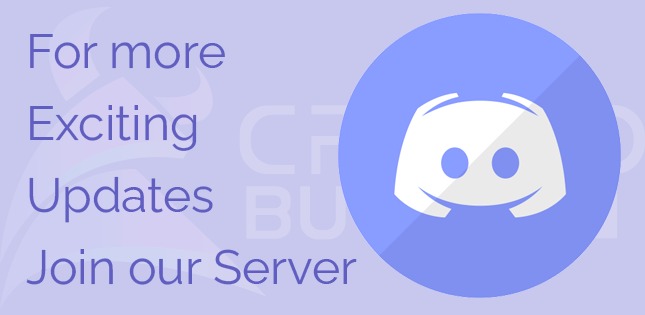The Breakthrough of zkLLVM: Streamlining Zero-Knowledge Applications
Nil Foundation, a blockchain cryptography firm, is set to revolutionize Ethereum’s scalability with its upcoming ZK-Rollup, a Layer 2 network incorporating sharding technology. The planned zkEVM (Zero-Knowledge Execution Environment) will enable the seamless execution of existing Ethereum decentralized applications (dapps). By integrating multiple shards into a unified Layer 2 environment, Nil aims to offer an innovative approach to scaling, combining modular and monolithic architectures.
Currently, in early development, the project anticipates a public testnet within the next 3-6 months, promising enhanced capabilities for data-intensive decentralized applications on the Ethereum platform. CEO Misha Komarov expressed enthusiasm about introducing zkSharding for Ethereum and its potential applications in high-load scenarios such as decentralized sequencers, data availability solutions, exchanges, and autonomous worlds.
zkLLVM acts as a compiler for developing zero-knowledge circuits
The new pipeline for circuit construction using zkLLVM eliminates the need for a Virtual Machine, resulting in significantly improved performance and efficiency. Developers can leverage familiar languages like C++, Rust, JavaScript, or TypeScript, supported by LLVM. The process involves augmenting existing code with a few annotations rather than rewriting it entirely.
After writing the code, a swift compilation into a circuit occurs in a matter of seconds. This transformation doesn’t introduce additional instructions or overhead, making it a highly efficient process. The compiler, a command-line tool akin to Clang and Rustc, seamlessly integrates into the development environment or CI/CD pipeline.

The compiled circuit serves as input for the prover. Instead of deploying the prover locally, an alternative option is explored, enhancing flexibility in the verification process. This streamlined approach optimizes development workflows by removing the virtual machine and associated services, offering a more straightforward and efficient circuit generation experience.
For detailed info on compiling, please click here.
What is LLVM (Low-Level Virtual Machine)?
LLVM, initially an acronym for Low-Level Virtual Machine, has evolved into a versatile set of compiler and toolchain technologies designed to support diverse programming languages and instruction set architectures. Its core strength lies in a language-independent intermediate representation (IR), functioning as a portable, high-level assembly language that undergoes optimization through various transformations in multiple passes. LLVM, primarily implemented in C++, is adept at compile-time, link-time, runtime, and “idle-time” optimization.
While it originated with a focus on C and C++, LLVM’s language-agnostic architecture has led to the development of numerous frontends, encompassing languages such as Ada, Swift, Rust, Java bytecode, and many others, making it a widely adopted and adaptable compilation framework.
For details about LLVM, click here.
Advantages of zkLLVM
Enhanced Scalability
Traditional blockchain networks, exemplified by Ethereum, grapple with scalability challenges, primarily constrained throughput. The Ethereum Virtual Machine (EVM) exhibits notable power but is limited in processing transactions per second (TPS), leading to elevated gas fees and delayed transaction confirmations during network congestion. These limitations hinder mainstream adoption and compromise user satisfaction.
Low Transaction Costs
The Ethereum network has long contended with soaring gas fees, especially as transaction volumes surge. The escalating cost of executing even basic transactions undermines the efficiency and user-friendliness of decentralized applications, discouraging widespread use.
Enhanced Privacy and Security
Privacy stands as a pivotal concern in the blockchain arena. While conventional public blockchains offer pseudonymity, they often lack robust privacy safeguards for sensitive data and transaction specifics. zkEVM Validium addresses this by leveraging Ethereum and zero-knowledge proofs, significantly elevating privacy measures.
Interoperability with Ethereum
zkEVM Validium presents a compelling advantage through its seamless integration with the Ethereum ecosystem. Existing Ethereum smart contracts can be effortlessly deployed on the Validium Chain without necessitating modifications. This interoperability enables developers to capitalize on Ethereum’s extensive library of applications and tools, streamlining the adoption process and fostering a more cohesive blockchain environment.
Real-World Applications and Case Studies
Real-world applications and case studies demonstrate the practical impact of zkEVM Validium in various industries. In finance, zkEVM Validium’s enhanced scalability and low transaction costs have facilitated the development of decentralized finance (DeFi) platforms that can handle high transaction volumes with greater efficiency and cost-effectiveness. The improved privacy and security features have found applications in healthcare, ensuring the confidentiality of patient data in blockchain-based medical records.
The seamless interoperability with Ethereum further amplifies its utility, fostering a more integrated and versatile ecosystem. Real-world applications across finance, healthcare, and supply chain management showcase zkEVM Validium’s tangible impact, underscoring its potential to reshape industries by providing a more efficient, cost-effective, and secure blockchain solution. As the technology continues to evolve, zkEVM Validium stands at the forefront, poised to drive innovation and facilitate broader adoption across diverse sectors.
Conclusion
The zkLLVM project signifies a significant leap forward in blockchain development, offering a streamlined and efficient approach to circuit construction by eliminating the need for a Virtual Machine. With its ability to seamlessly integrate mainstream languages like C++ or Rust into circuits, zkLLVM enhances accessibility for developers and optimizes performance. However, it’s essential to consider potential challenges, including the learning curve associated with adopting a new compilation framework and ensuring that the benefits of increased performance are balanced against the need for developers to adapt to this novel paradigm. Despite these considerations, the potential for improved scalability and efficiency makes zkLLVM a promising innovation in the blockchain landscape.


